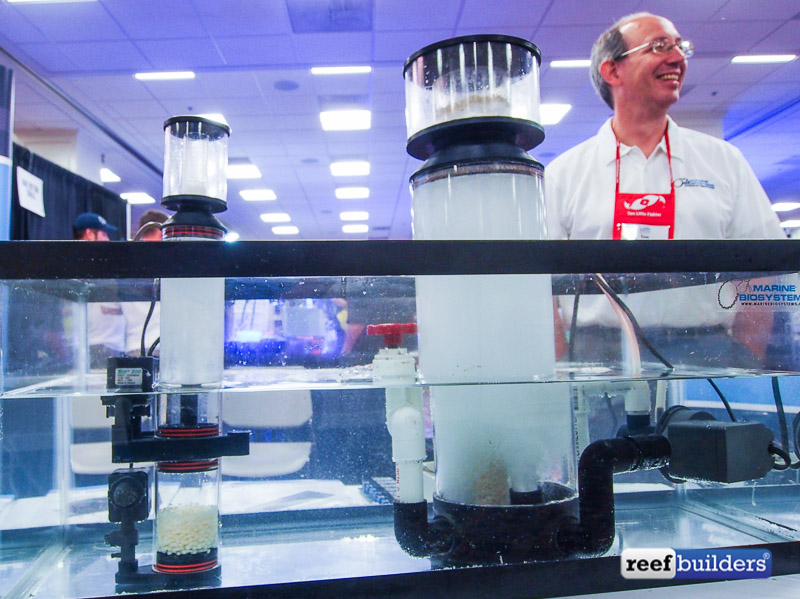Marine Biosystems is an intriguing new upstart in the marine aquarium hobby which garnered a lot of attention for their unique ‘biopellet skimmers’. The 3D printed biopellet reactor is what first put Marine Biosystems on the map, but it is their novel design for a Biopellet Skimmer which really sets them apart.
Ever since the introduction of biopellets for nutrient management and nutrient export of marine aquariums, it’s always been understood that the real effectiveness of biopellets is in creating ‘biomaterial’ which can easily be captured and exported by protein skimming. Some companies have tried to create biopellet and protein skimmer systems which work directly together, but Marine Biosystems is the first to design a new class of biopellet skimmer wherein the fluidized reaction of the biopellets is right inside the protein skimmer, for maximum effectiveness.

We first learned of the Marine Biosystems biopellet skimmer through a single, grainy video on youtube, but thankfully we got the chance to see the new concepts in person at MACNA, where we discovered that a second, smaller biopellet skimmer was also on the drawing board. The two models of biopellet skimmers are fairly different from each other, with the larger model using a single Sicce PSK pump to drive both the biopellet reactor and to create the foam that powers the foam fractionation of the protein skimmer.
Where the first biopellet skimmer design featured a biopellet reactor inside the protein skimmer reaction chamber, the new smaller biopellet skimmer we looked at is a more straightforward design. For Marine Biosystems’ smaller model, the small protein skimmer stacked directly on top of a compact biopellet reactor, each of them being driven by separate and small Rio pumps.

The amount of air currently being produced by both biopellet skimmer models currently leaves much to be desired. However, Marine Biosystems tells us that these are still very early design concepts and they plan to keep working on the concept, and trying different pumps and plumbing combinations to achieve the best performance for both the biopellet reactor and the protein skimmer.
The potential for this new breed of protein skimmers working in tandem with a biopellet reactor not only saves space and clutter inside the aquarium sump filter, but it also promises to promote the most ideal application of biopellets for nutrient export. Availability and pricing of either models is still a ways off until Marine Biosystems can refine the design, but they are sure to have a hit on their hands if they can refine the new biopellet reactor design to a point where both systems work at optimal capacity.








